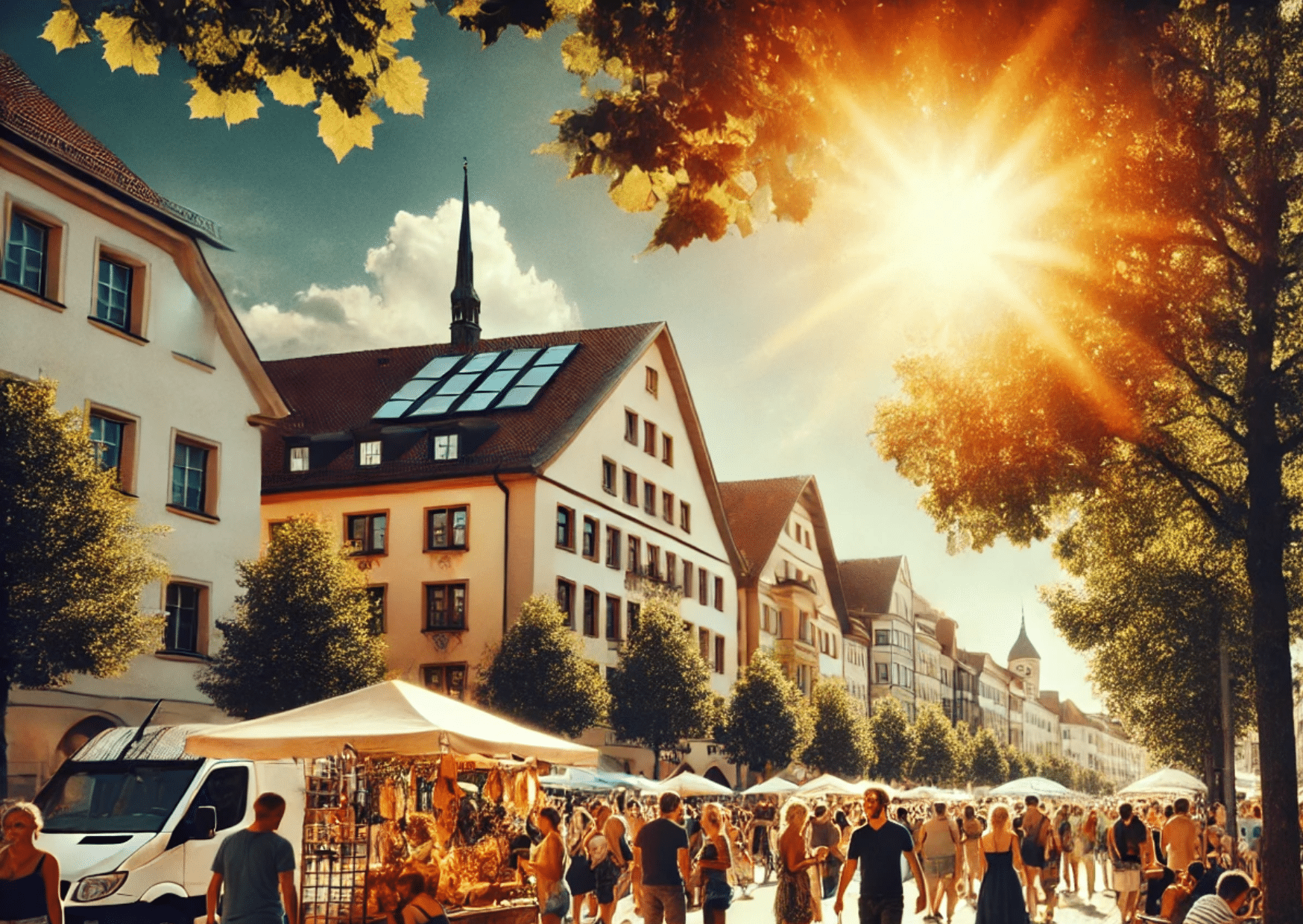Climate change is becoming increasingly noticeable in Bavaria's cities. Residents are feeling the rising temperatures, especially in the summer months. Researchers expect that the number of days over 25 degrees could double in the future. Cities are thus becoming veritable heat islands, where temperatures are significantly higher than in the surrounding areas. These urban heat islands pose a growing challenge for urban planners and residents.
The causes of urban heat
Several factors contribute to the heating of cities. Concrete and asphalt surfaces store heat and only release it slowly, which means that there is hardly any cooling at night. Traffic and other artificial heat sources also contribute to warming. In addition, many neighbourhoods lack sufficient green spaces that could have a cooling effect. One example of this is Hofackerstrasse in Augsburg, which is characterised by concrete buildings and parked cars and heats up considerably.
Trees as natural air conditioning
Planting trees is an effective and proven method of cooling cities. Trees not only provide shade, but also cool the air through evaporation. A large tree can evaporate between 60 and 80 cubic metres of water per year, which leads to a considerable reduction in temperature. Healthy and well-watered trees are therefore essential for climate regulation in urban areas.
Problems and solutions for greening
However, many urban trees are under stress because the ground around them is often too heavily sealed. This means that water cannot reach the roots, which significantly limits the trees' evaporation capacity. Urban planners such as Andreas Hofmann from Augsburg are therefore focussing on unsealing areas and creating more green spaces. Munich's Rotkreuzplatz shows how successful such measures can be: Here, 34 large trees ensure a more pleasant temperature compared to the surrounding streets.
Challenges and acceptance among the population
However, redesigning urban spaces in favour of more green areas and less sealed surfaces is not always easy. There are often conflicts with the use of car parking spaces and other urban needs. Long-term, well-thought-out planning that involves residents is therefore essential. In Augsburg, Hofackerstrasse is being redesigned as a so-called climate street, although there are also critical voices. Urban planners must therefore always find compromises in order to fulfil the different needs of the citizens.
Conclusion
The fight against urban heat requires innovative and sustainable solutions. The greening of cities and the reduction of soil sealing are key measures to improve the urban climate. This is not just a task for urban planners, but also requires the commitment and support of citizens. Because only together can we make our cities more resilient to the challenges of climate change. Another important step is to keep the heat out of people's homes. External heat protection for windows is recommended for this purpose. Such as the CLIP'N'SHADE external roller blind: http://clipnshade.de/shop/clipnshade-aussenrollo/
Further information and detailed data on climate changes in cities can be found on the website of the German Weather Service here.
Sources:
- Trümper, Arno. "Bavaria's cities are getting hotter and hotter." BR24, 22 July 2024.
- Focus No. 285, April 2020. "Barrier-free living space: demand rises sharply due to ageing - promotion works." KfW Research.
- Workbook Trend Canvas, 2022 "Trend Glossary."







